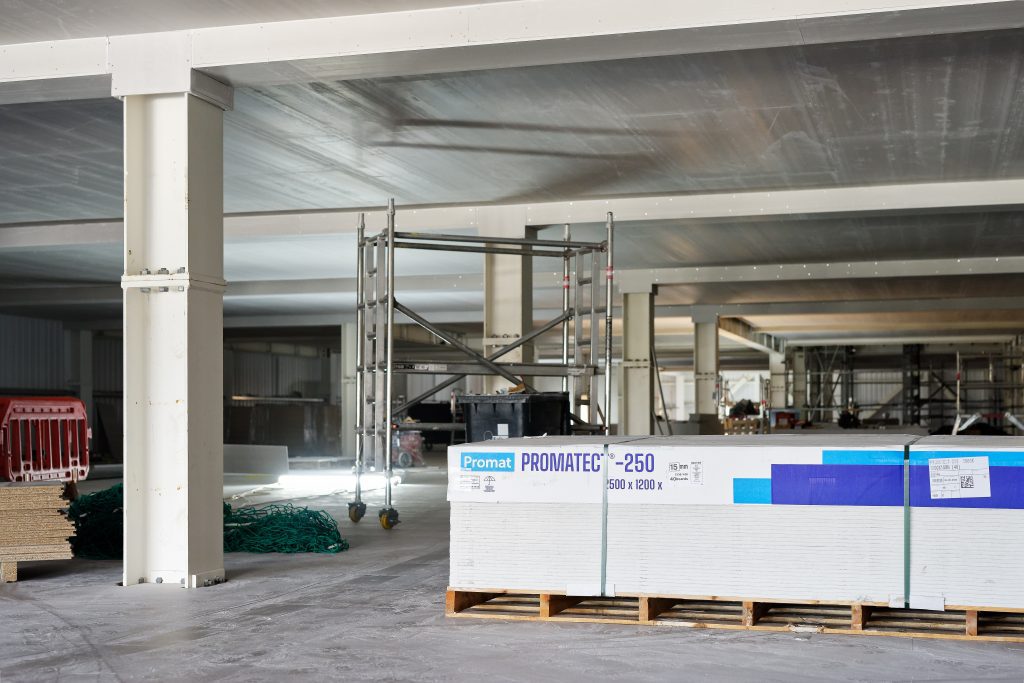Choosing and installing the correct passive fire protection system can be confusing – with a range of application requirements, legislation and a host of products to choose from. Here, Ken Francis, Technical Support Manager at Promat, talks us through some of the most frequent questions posed to him and the technical team.



1. Do you need to be an approved or accredited installer to work with fire protection boards?
While being approved or accredited is not mandatory, here at Promat, we expect installers to be competent and experienced in all aspects of the installation of passive fire protection systems. Ideally, we would recommend that installers are registered by a third-party certification scheme. These schemes typically carry out site inspections and set out training, competency and standards that must be achieved by the installer.
There are a number of these schemes, one of which is FIRAS. The following link will guide you to a list of FIRAS-accredited installers: https://www.warringtoncertification.com/certified-companies/ but other schemes are available.
2. How do I provide compartmentation to a steel structure that sits on a compartment line?
There are various methods of providing fire protection to steel sections, these include boards, special coatings or designing steelwork so no protection is needed. However, if the beams or columns are on compartment lines, then there will be a requirement to provide fire insulation through the steel. This needs to be taken into consideration when the method of fire protecting the steel is chosen.
For boarded protection, the thickness may need to be increased above that required for the protection of the steel, to a defined limiting temperature, so that fire insulation (compartmentation) is achieved. Fire insulation periods of 60-240 minutes can be achieved with Promat board products. It’s important to note that methods such as intumescent paint are unlikely to meet compartmentation requirements.
It’s also important to pay careful attention to any openings or penetrations in the compartment walls, and through the steel fire protection encasement and use appropriate firestopping measures, such as fire-resistant seals, penetration collars, or intumescent materials, to seal the openings and maintain the compartmentation.
Whatever fire protection method is put in place, it’s vital they are regularly inspected, maintained, and tested (if required) to ensure their effectiveness as in the Building Regulations.
3. How do I upgrade the fire performance of the existing concrete structure of a building I am refurbishing for change of use?
To upgrade the fire performance of concrete structures there is a requirement to know what thickness of concrete, or cover to reinforcement, is needed to achieve the fire performance without additional treatment. Once this is established then the correct Promat product and thickness can be selected according to its “concrete equivalence” which has been derived from test data.
Promat can provide thin lightweight board products which can upgrade the fire performance to up to 240 minutes which can be fixed directly to concrete walls, beams, columns and soffits.
4. Is there a ceiling system which provides fire resistance from both above and below?
Promat have two types of boarded ceiling system available that can provide fire resistance from above and below. Choosing the correct one depends on the application and location. There are self-supporting systems, which include steel channels that must be fixed to masonry. There is also a system which can be suspended directly from the structure above which must also meet the desired fire performance. In both cases, there are 60 and 120 minute versions available which provide both integrity and insulation from both above and below.
5. Do Promat have systems for load bearing steel joisted mezzanine floors which require 30, 60, 90 or 120 minutes protection?
A mezzanine floor system which is protected using a single layer of 15mm thick PROMATECT®-250 to the underside of the steel joists can provide 30 or 60 minutes load bearing capacity, fire integrity and fire insulation (from below). Depending on the section factor (or A/V value) of the steel sections it is likely that the 15mm thick board will also provide fire protection to the hot rolled steel beams and columns supporting the cold rolled joists.
For 90 & 120 minute systems, the thickness will need to be increased to two layers of 15mm thick PROMATECT®-250 to the underside of the steel joists. Two layers of 15mm will cater for section factors of up to 140m-1 for 120 minutes, or section factors of up to 350 m-1 for 90 minutes (both assuming a 550oC limiting temperature).
Got a technical question for the Promat team? Email today: technical@promat.co.uk or check our website for other frequently asked questions Promat.com/knowledge-base

Building, Design & Construction Magazine | The Choice of Industry Professionals





